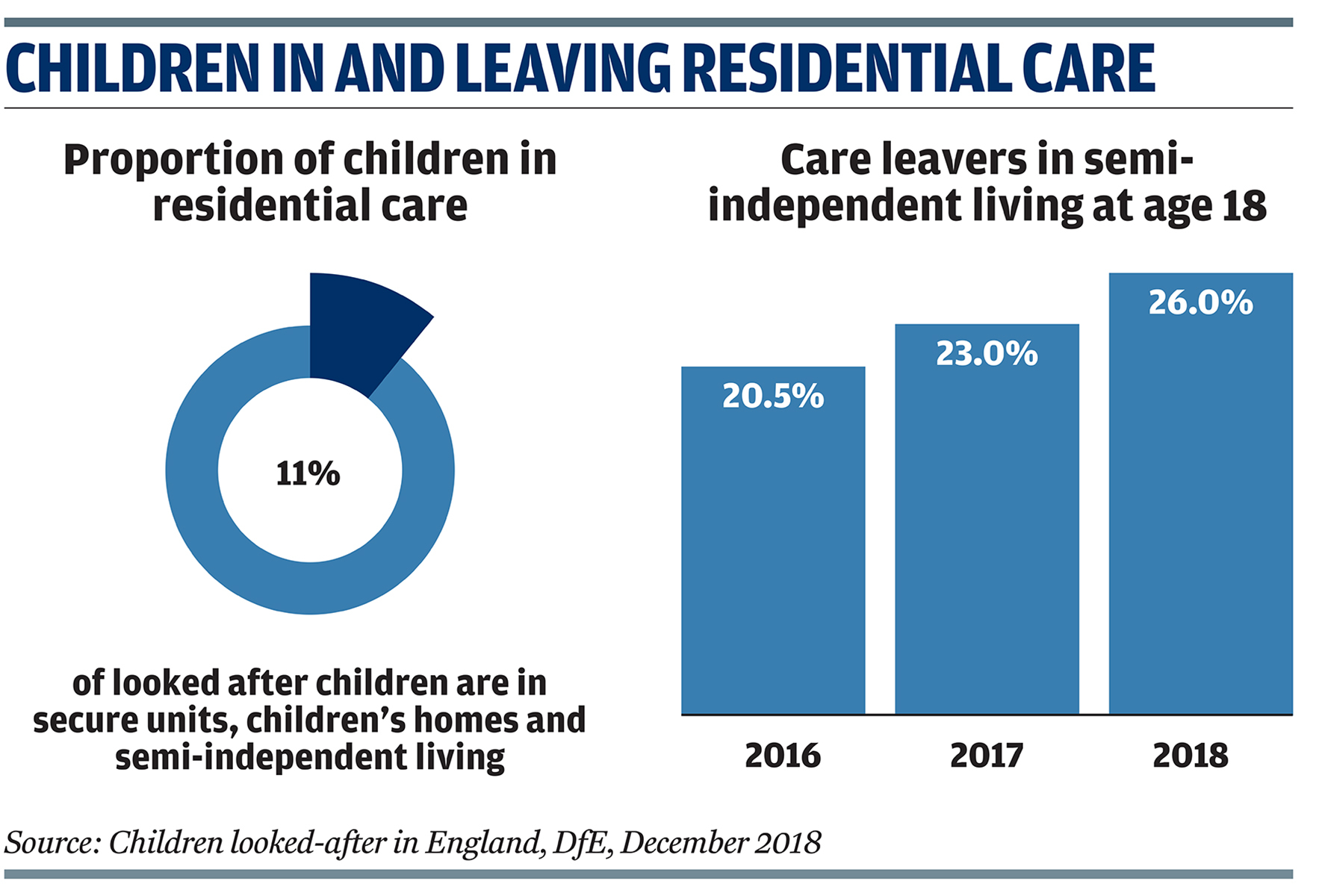Leaving Care Report
Derren Hayes
Tuesday, January 29, 2019
Statistical data and biographical stories record that the life opportunities for young people leaving care has been a cause for major concern for decades. Comparisons between the various placement options are made from the data regarding the final care placement.
- ICHA
- September 2018
The report highlights that it is not because residential care is less willing, able or competent that children leave from these settings particularly disadvantaged; it is because residential care is the departure point from care and frequently the last in a series of placements that have failed to successfully meet or address the child's needs.
Background
The report cites data from 2016 showing that around seven per cent of children in care are in residential care, and in 2015, 10,800 left care; almost double the number in 2005.
Care leavers are more likely than the general population to be not in education, employment or training, in prison, homeless, teenage parents, working in the sex trade, in debt, suffering with mental health problems and to have self-harmed.
While the provision was made in 2014 to allow children leaving foster care the option of "Staying Put" with their foster carers until up to 21, no similar provision was or subsequently has been offered to children leaving residential care.
Sir Martin Narey's Review of Residential Child Care in England (2016) did recommend that an alternative, "Staying Close", be considered for those from the "residential estate"; but while this is being piloted in eight areas, the authors assert that what is being offered is barely more than what good children's homes have offered for years.
The leaving care process
Providers can have little, if any, influence about the starting point for that journey in individual cases, but can still influence it. The Narey Review cites the fact that this is currently not so but should be because "we know that children who have the opportunity to live in children's homes for longer are more likely to have positive outcomes".
The report authors suggest the children's home sector should continually challenge commissioners with evidence-based data of the success of timely residential placements at an earlier stage in the child's journey through care. The numbers of such placements are small, which means information about each one needs to be recorded to demonstrate the efficacy of such policies.
Learning life skills
The report highlights the skills needed to "prepare for adulthood": learning to manage finances, a trip to the supermarket, cooking, and registering with health professionals. It makes the point that for those children not in care, these skills and abilities are learned from their parents over a prolonged period and with the advantage of a "secure base".
A relationship-based model makes life skills part of everyday life, it states. Well delivered and well-planned care over a period should preclude the need for a "Pathway Plan" except to deal with some of the practicalities of everyday life.
Advocacy
In terms of addressing disputes in the home or between provider and commissioner, the report considers the role played by independent advocates. Availability at short notice and having the time to get to know the child are considerable barriers, according to the authors.
Given that at any time with any given placement a dispute may occur, they assert that it would be wise to consider seeking an advocate at the very early stages of a placement. If they are needed and they're not in place, there is a real risk that the best interests of a child will not be served.
Staying Close
Young people over the age of 18 are already frequently allowed to continue to live in their children's homes, as long as Ofsted agree such a plan is in the young person's interests and has the support of the "parent" local authority, the children's home provider and crucially the young person.
Suggestions such arrangements are a safeguarding risk are "severely flawed", the authors' say.
A formal process of risk assessment starts on the day they arrive and is constantly reviewed. These reviews are scrutinised by the inspectorate and the requirements set out in the Children's Homes Regulations and Quality Standards (2015).
"There is no reason whatsoever why this process cannot, should not and does not continue, regardless of the age at which a child or young adult leaves their placement," the authors say. "If the placement was considered to be appropriate for the child (and others in the home) at 17 years and 364 days, then why wouldn't it be the following day?"
There are currently pilots of Staying Close in eight areas of the country. These include local authority and independent homes. The pilots are diverse in their interpretation of what a Staying Close placement should look like to enable the DfE to seek to make a judgment on "what works".

Implications for practice
- Success in moving on from residential care often hinges on the quality of the relationships young people have had with staff in that provision. Homes are encouraged to use relationship-based practice to make life skills (especially around managing wellbeing) part of everyday life.
- All professionals involved in a young person's care need to be involved in developing a baseline assessment of their needs and reviewing these regularly, using evidence-based measurement tools and methodology. This will enable homes to track young people's outcomes before they leave care.
- Advocates should be engaged by homes at the outset of placements, so that if they are needed later, they already have an established relationship with young people.
- Staying Put arrangements, if appropriately risk assessed, could be an option for care leavers if this is in the young person's interests and has the support of the "parent" local authority, the provider and the young person.
Click here to read more in CYP Now's Residential Care special report




